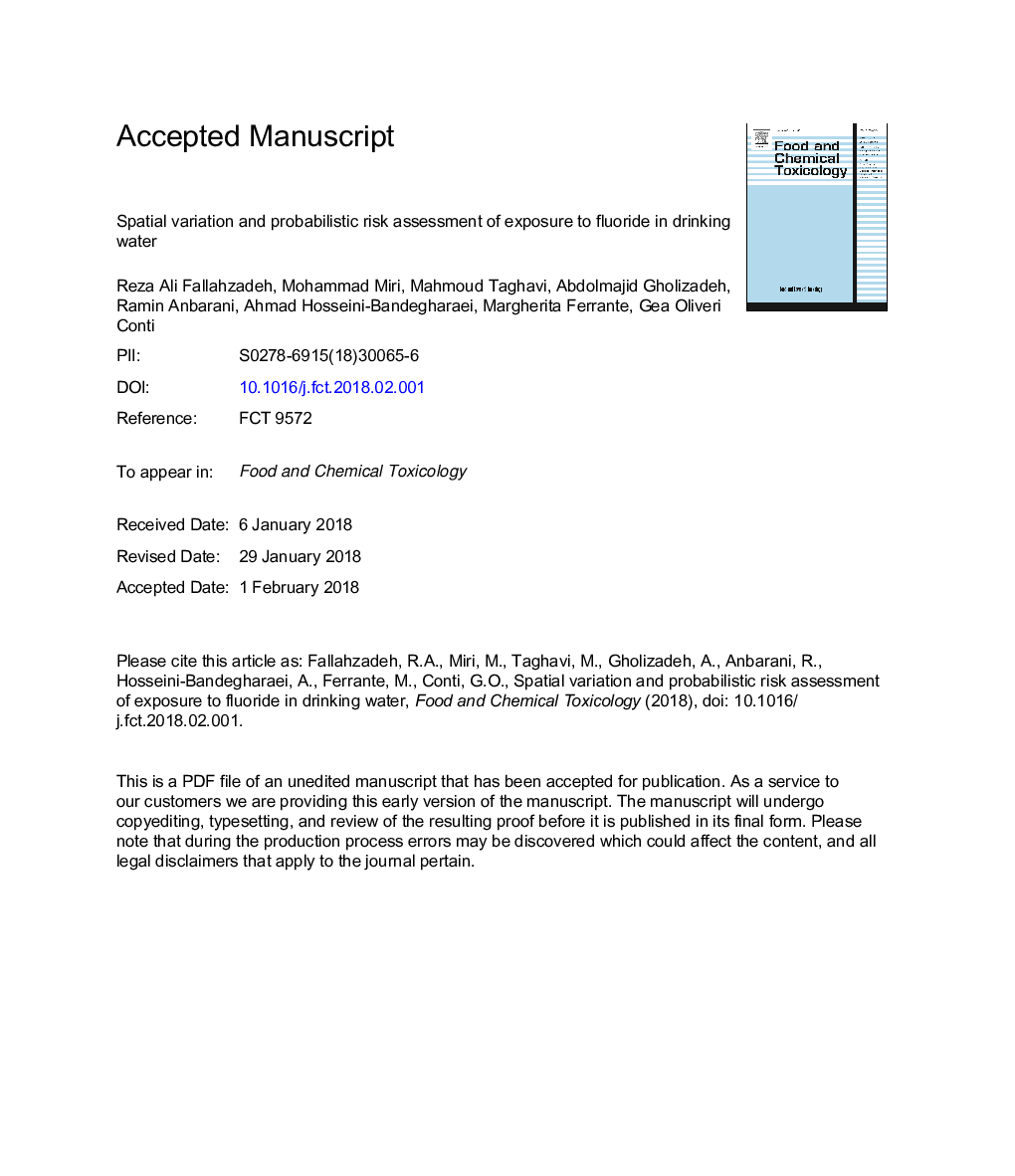| Article ID | Journal | Published Year | Pages | File Type |
|---|---|---|---|---|
| 8548187 | Food and Chemical Toxicology | 2018 | 23 Pages |
Abstract
Assessing the health risks of exposure to fluoride in developing countries has been unclear. In this study, the concentration of fluoride and its spatial analysis in groundwater of 6 counties of Yazd province, Iran, were investigated. Health risk assessment of three age groups (children, teens and adults), sensitivity analysis and uncertainties of effective variables were carried out using Monte Carlo simulation. The results showed that 68.77% of the samples taken were within the standard range set by the WHO guidelines (0.5-1.5â¯mg/l). The mean (Standard division) of fluoride in Ardakan, Azezar, Mehriz, Meybod, Taft and Yazd were 0.83 (0.31), 0.73 (0.41), 0.56 (0.20), 0.91 (0.32), 0.60 (0.32) and 0.64 (0.25) respectively. Among the studied counties, Ashkezar has the highest dispersion in terms of high concentration of fluoride. The hazard quotient (HQ) value for all age groups except children was less than 1, indicated potential of non-cancer risk of exposure to fluoride for this group. The most important variable in calculating the HQ was the drinking water ingestion rate, concentration of fluoride and the fraction of skin in contact with water, so more focused on these parameters should be made for a more accurate health risk assessment.
Related Topics
Life Sciences
Agricultural and Biological Sciences
Food Science
Authors
Reza Ali Fallahzadeh, Mohammad Miri, Mahmoud Taghavi, Abdolmajid Gholizadeh, Ramin Anbarani, Ahmad Hosseini-Bandegharaei, Margherita Ferrante, Gea Oliveri Conti,
